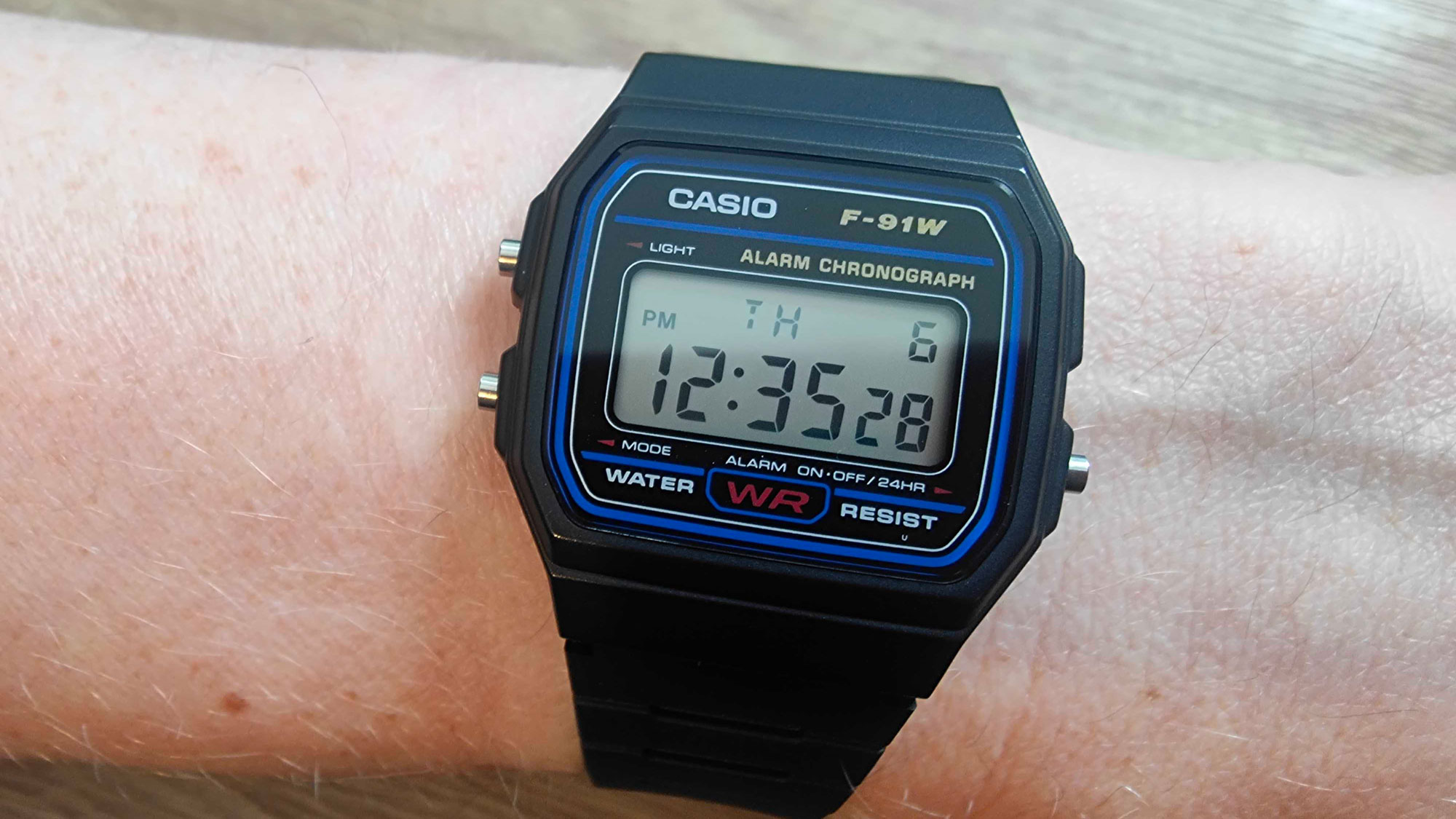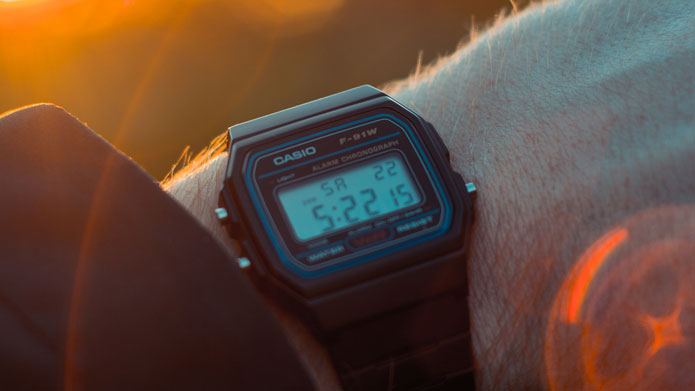I test the world's best smartwatches – so why am I wearing a $15 Casio?
Even in a world of premium smartwatches, this $15 Casio is relevant

Sometimes, it’s the little things. A fresh cup of coffee in the morning. A walk through the park in the sunshine. Choosing not to wear your activity tracker in favor of a $15 digital watch instead.
Yes, you read that right. I review some of the best running watches and best smartwatches for a living (I recently finished testing the Garmin Forerunner 265, to spectacular results), and yet the wearable that has made me most excited this month is a retro digital watch that cost just under $15. I’m talking, of course, about the Casio F-91W, the world’s most popular digital watch.
First introduced in 1989, this chronograph watch is still in production – it’s the best-selling watch on Amazon, at the time of writing – and practically unchanged since its inception. It weighs just 21g and is 37.5mm at its widest point, making it a slender watch you can barely feel on-wrist, in defiance of all modern trends.
There’s a (very) faint green LED backlight you can access with a dedicated push button, while the two other buttons allow you to set an alarm, operate a stopwatch, and change the time and date. A single glance at this watch gives you the day of the week, the date of the month, the hour, minute, and the second.
It’s powered by a single lithium cell and lasts up to seven years. Seven. Years. For less than the price of a couple of beers (depending on where you live) you’ll have a watch that will outlive any smartwatch I could name. Apple will eventually stop supporting older devices as its current OS becomes more advanced – we’re seeing this with the iPhone and iOS17 now – but the F-91W will just keep on trucking. It’s not waterproof, only water-resistant, but otherwise it’s so light and lasts so long you’d never need to take it off.

The movement is also notoriously accurate. So accurate, in fact, that it’s been infamously used in bomb making, to the point where US intelligence agents declared it to be ‘the sign of al-Qaeda’ in training material issued to staff at the Guantanamo Bay detention facility in 2011. The Casio F-91W has in fact featured on both sides of the War on Terror: Barack Obama was pictured wearing one in his pre-Senate days. Elsewhere, modern-day hipsters have co-opted it as classic retro chic, a sort of protest against the late-stage capitalist idea of shelling out a small fortune for a watch that will be obsolete in a few years.
I’ve never considered myself a hipster, nor am I an amateur explosives expert. So why am I wearing one now? And does the Casio F-91W have a place in 2023, even on the wrist of someone who's invested in Apple's, Garmin's or Google’s wearable ecosystem?
Sign up for breaking news, reviews, opinion, top tech deals, and more.
Yes. Yes it does. I just finished up a three-month training block, during which I used Training Readiness scores, Sleep scores, Morning Reports and a variety of other metrics and tools from Garmin and Apple to dial in my running and recovery routine. Now I’m having a rest before another challenge crops up, and I really don’t want to think about my heart rate variability, whether I slept well, or even have notifications on my wrist at all – I just want to give my brain a break.
Hence the Casio. I slipped it on a couple of days ago, and it’s more comfortable to wear, including to bed, than a larger unit like the Forerunner or Ultra; you barely know it’s there. I didn’t have to turn it off when I went to the cinema, and when I used the extremely dim backlight to check the time, I didn’t have to worry about disturbing the people around me with the flash of a screen. I'm planning to do some strength-training sessions in the next few days, and I’ll use the old-school stopwatch function on the watch to time my rest periods.

Sometimes, people don’t want to know their Training Readiness score or get Twitter on their wrists: they want to be able to tell the time and date, and access a couple of other basic functions, on a cheap watch that will last the better part of the decade.
Taking a digital detox or a short break from your devices is usually a good idea, and in my opinion, it’s well worth spending $15 / £12 / AU$20 on a bit of famously (or infamously) reliable retro wristwear that allows you to do just that.
This watch means different things to different people – one colleague squeaked “This watch was my childhood!” when I unveiled it in the office. If you’ve ever felt bored of online outrage culture, and wished you were back in the 90s, riding your bike over to the arcade, this small purchase might rekindle some memories, even if you never owned one back when.
Buy it, stick it in a drawer, and pull it out when you’re sick to the back teeth of being so connected to the digital world, and yearn for a simpler time. Buy one and wear it while you’re doing DIY, painting the garage, going rock-climbing, or doing work on a construction site. If it gets a knock against a rock wall or a splatter of paint across it, it’s better it happens to the F-91W than your expensive Apple Watch Ultra, although its slim profile makes it unobtrusive and unlikely to get in the way.
This is its place in the modern world: a temporary reprieve from rampant consumer culture, constant connectivity, and an increasing amount of black screens in your life. The initial buy-in is incredibly small, it asks nothing from you, and it'll be there for years whenever you need it. Pull the trigger, keep it in your bedside drawer, and you might end up wearing it more often than you thought.

Matt is TechRadar's expert on all things fitness, wellness and wearable tech.
A former staffer at Men's Health, he holds a Master's Degree in journalism from Cardiff and has written for brands like Runner's World, Women's Health, Men's Fitness, LiveScience and Fit&Well on everything fitness tech, exercise, nutrition and mental wellbeing.
Matt's a keen runner, ex-kickboxer, not averse to the odd yoga flow, and insists everyone should stretch every morning. When he’s not training or writing about health and fitness, he can be found reading doorstop-thick fantasy books with lots of fictional maps in them.